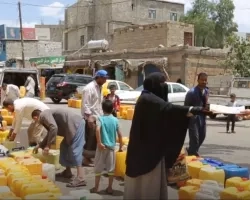In the 1960’s, NASA began using the term “Tiger Teams” for small, determined teams of experts to help solve complex problems. The tradition continues today, with the announcement of the third generation of Tiger Teams within the Health and Air Quality Applied Sciences Team (HAQAST).
HAQAST works to connect NASA science with air quality and public health stakeholders, and these Tiger Teams focus on key issues of interest to protecting public health. The five 2021 Tiger Teams address environmental justice, improving data usability, urban planning, air quality outreach, and health effects from fires.
coordinator for NASA HAQAST.
Credits: NASA/Jenny Bratburd
These projects will work with a variety of NASA and National Oceanic and Atmospheric Administration (NOAA) satellites and related data products relevant to health and air quality. “I’m excited for these new projects,” says HAQAST outreach specialist Dr. Jenny Bratburd, “each of them can lead to huge improvements for the use of satellite data for many different stakeholders.”
NASA-funded researchers work side-by-side with professionals from a wide range of organizations, and all Tiger Teams are selected by stakeholder reviewers to ensure projects address real-world needs.
The Tiger Team activities complement ongoing projects led by each of the 14 HAQAST members, as well as the outreach and rapid response activities of the team. “We’ve found the team structure to be incredibly effective in bridging NASA data with new user communities,” says HAQAST Leader, Dr. Tracey Holloway. “Tiger Teams really exemplify this approach to problem-solving, with researchers and practitioners learning from each other.”
To find out more about the new HAQAST Tiger Teams, and read descriptions of each of the projects, please visit the HAQAST Tiger Team page. HAQAST welcomes new collaborations and welcomes interested participants who would like to get involved with these projects or learn more to reach out.





